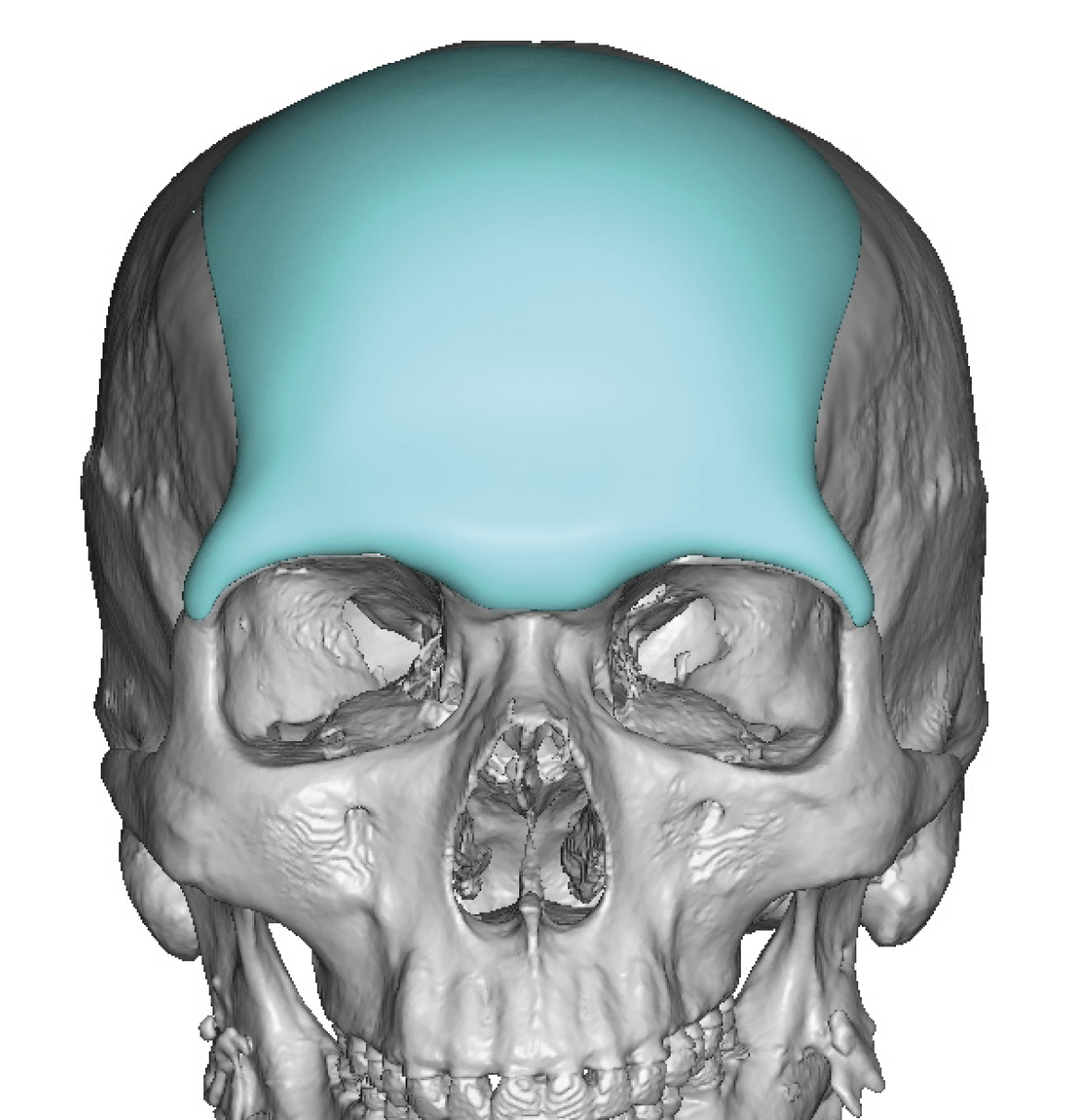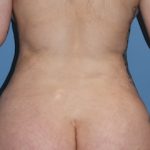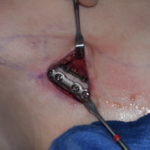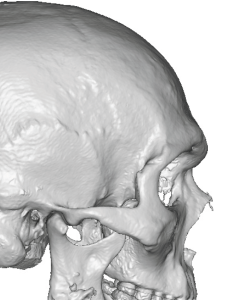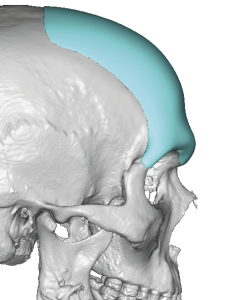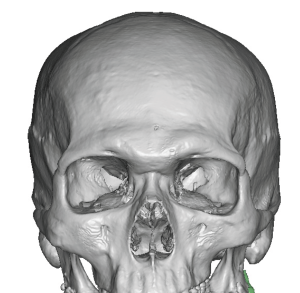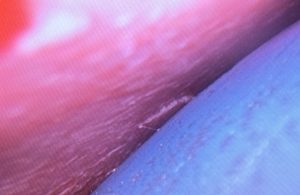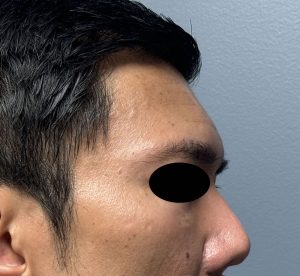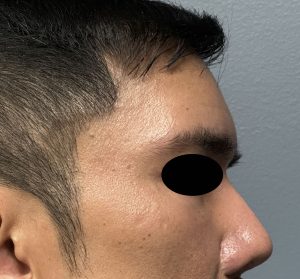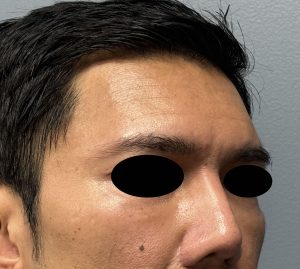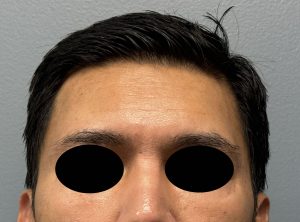Background: Masculinization of the male face typically involves augmentation of the facial bones. More prominent facial bones are typically associated with a stronger facial appearance. The lower jaw or jawline is the most common type of facial bone augmented as a strong jaw/jawline has long been associated with a more masculine appearance. But the lower jaw is only a third of the face and this leaves the midface and forehead as other augmentation options. In terms of patient requests the midface would be the second most common facial masculinization area performed with the forehead as a distant third.
Despite being less commonly augmented than the lower two-thirds of the face the forehead has several distinctive shape features that have long been identified as masculine. Prominent brow ridges with a visible suprabrow bone break above it, a mild forehead slope and a wider and higher forehead shape are the distinctive male upper facial features. There are variations in the expression of these male forehead features but each one is distinctly different from that of a female
Male who present for forehead masculization fall into two categories, subtotal forehead augmentation (no brow bone component) and total or complete forehead augmentation. (forehead + brow bones) In doing either one the superior technique is a custom implant design. This is particularly needed in a complete forehead augmentation due to the complexity of the shape needed, the ability to do the augmentation through a small scalp incision and the need for the implant to resist the pushback of the together releases soft tissues across the brow bone area.
Case Study: This male present for complete forehead augmentation with a prior history of implant augmentations of the lower two-thirds of his face. In essence he sought to complete his facial masculinization efforts.
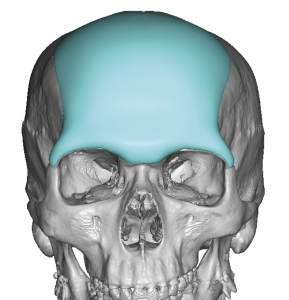
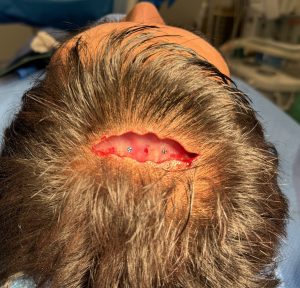
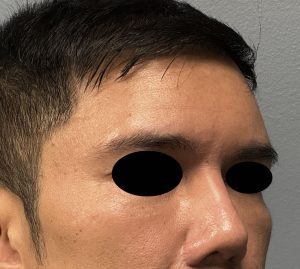
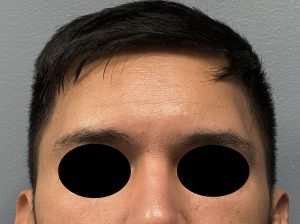
Key Points:
1) Total forehead augmentation or a forehead-brow bone implant is typically done in males.
2) Masculinizing the male forehead is a combination of increased brow bone projection and decreasing the backward slope of the forehead.
3) Male custom forehead implants are placed through a scalp incision aided by endoscopic release across the brow bone area.
Dr. Barry Eppley
World-Renowned Plastic Surgeon

